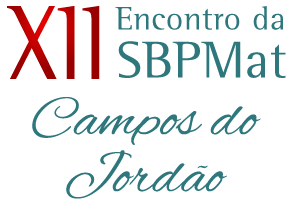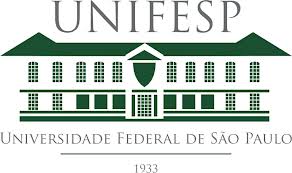Symposium JKM
Characterization Techniques in Damage Inspection, X-ray Tomography and Radiography Imaging, and Electron Microscopy
Scope:
Clarification Note:
Symposia J, K and M have formed a joint session named symposium JKM, “Characterization Techniques in Damage Inspection, X-ray Tomography and Radiography Imaging, and Electron Microscopy”. This merger maintains the original characteristics of each original symposium. Therefore, invited lectures and all abstract accepted will be presented under this new name. The symposium aims to gather together scientist and students using these techniques to share experience and to learn from each other from basic use to application reaching the state-of-the-art in those fields.
Regarding the Techniques and Applications of Inspection for Damage, investigations on technologies developed for damage inspection involving material and structural failures as well as failure analyses techniques to determine its root causes will be presented. It is also a goal of this subsection of the symposium to present several possibilities of application of these technologies in real problems and the efforts to qualify personal able to use these techniques to improve equipment’s life extension.
In X-ray Tomography and Radiography Imaging session, will be explained how hidden structures can be revealed in a non-destructive manner in heterogeneous materials using X-rays generated by synchrotron or X-ray sources. In addition, as the materials and components under study become increasingly complex, multi-modal imaging techniques and multi-scale studies are rapidly gaining importance. Therefore, the aim of the part of the symposium is to provide information on the rapidly developing experimental imaging techniques with respect to novel potential applications. Applications to several fields ranging from engineering to biology, biomedical research, and geology will be presented.
Electron Microscopy is one of the most powerful tools for materials characterization and it is indispensable for nanoscience and nanotechnology. The combination of electron diffraction, x-ray spectroscopy and electron energy loss spectroscopy with many imaging modes puts electron microscopy among the most powerful and flexible characterization techniques. In recent years, many advances in electron optics and detectors systems have enhanced electron microscopes in several ways. This part of the symposium provides an open forum for the discussion of recent research using electron microscopy techniques applied to Material Science.
Subsession Topics:
Inspection for Damage - Techniques and Applications:
- Non Destructive Testing and how to qualify personal to work with these techniques.
- Failure analyses and corrosive phenomena and how to prevent them.
- Electromagnetic techniques and its new development on failure prevention.
- Acoustic emission and news trends on failure prevention.
- Welding technology applied to new materials.
- Damage inspection in real systems.
X-ray Tomography and Radiography Imaging:
- Recent developments in synchrotron and conventional X-ray tomography
- Phase-contrast imaging (tomography and radiography)
- Diffraction contrast imaging
- X-ray fluorescence tomography
- Imaging of dynamic systems
- Digital radiography
- X-ray topography
- Application in materials science, life science, geology and engineering
Electron Microscopy: from micro to nanoanalysis:
- TEM and SEM imaging for materials science characterization (including electron diffraction techniques - SAD, NBD, CBED, precession, EBSD)
- High-Resolution TEM imaging (including structural analysis, defects, quantitative analysis, reconstruction methods, HRTEM image simulation, among others)
- STEM and Z-contrast imaging for materials science characterization
- EDS chemical analysis from micro to atomic scale (qualitative and quantitative analysis, chemical mapping, spectral imaging, multivariate statistical analysis)
- EELS chemical analysis from micro to atomic scale (qualitative and quantitative analysis, chemical state analysis and mapping, spectral imaging, multivariate statistical analysis)
- EFTEM imaging applied to chemical and structural analysis (including energy selected imaging, energy filtered diffraction and chemical mapping)
- In-situ electron microscopy techniques applied to dynamical events characterization
- Electron microscopy enhancements by aberration corrected imaging
- Other microscopy techniques applied to materials science and nanoanalysis (including tomography, holography, catholuminescence, Lorentz microscopy, environmental electron microscopy, AFM)
Invited Speakers:
Inspection for Damage - Techniques and Applications:
Danilo Stocco, Abendi, Brazil
X-ray Tomography and Radiography Imaging:
Ingo Manke, Helmholtz-Zentrum Berlin für Materialien und Energie GmbH, Imaging Group, Germany
Luigi Rigon, Instituto Nazionale di Fisica Nucleare, Italy
Electron Microscopy: from micro to nanoanalysis:
Jaysen Nelayah, University Paris Diderot, France
Raul Arenal, Institute of Nanoscience of Aragon, Spain
Thomas Hansen, Technical University of Denmark, Denmark
Symposium organizers:
Inspection for Damage - Techniques and Applications:
Jonhson Delibero Angelo, Universidade Federal do ABC, Brasil
André Fenili, Universidade Federal do ABC, Brasil
José Rubens Maiorino, Universidade Federal do ABC, Brasil
Karl Peter Burr, Universidade Federal do ABC, Brasil
Juan Pablo Julca Avila, Universidade Federal do ABC, Brasil
X-ray Tomography and Radiography Imaging:
Augusta Isaac, Pontifícia Universidade Católica de Minas Gerais (PUC Minas), Brasil
Marcelo Hoennicke, Universidade Federal da Integração Latino-Americana (UNILA), Brasil
Ricardo Tadeu Lopes, Universidade Federal do Rio de Janeiro / COPPE, Brasil
Electron Microscopy: from micro to nanoanalysis:
Carlos Alberto Ospina Ramirez, Centro Nacional de Pesquisa em Energia e Materiais, Laboratório Nacional de Nanotecnologia, Brasil
Luiz Fernando Zagonel , Universidade Estadual de Campinas Instituto de Física, Brasil
Leonardo Lagoeiro, Universidade Federal de Ouro Preto, Brasil
Luciano Andrey Montoro, Universidade Federal de Minas Gerais, Departamento de Química, Brasil
Jefferson Bettini , Centro Nacional de Pesquisa em Energia e Materiais, Laboratório Nacional de Nanotecnologia, Brasil
Paola Barbosa, Universidade Federal de Minas Gerais, Centro de Microscopia, Brasil

















